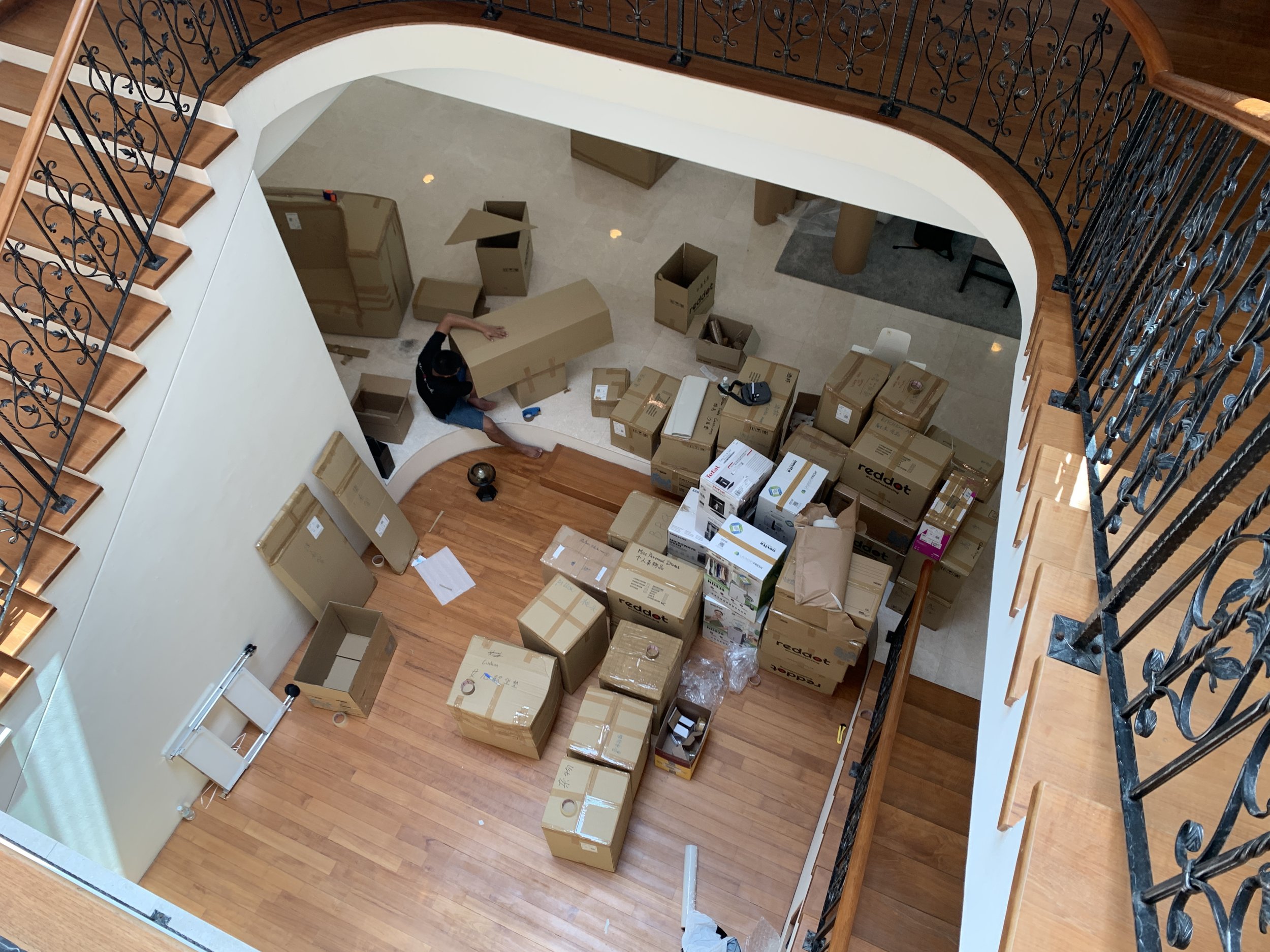Sustainable Alternatives to Bubble Wrap for Packing Your Fragile Items
Bubble wrap
When it comes to moving and packing your house, ensuring the safety of your fragile items is of utmost importance. While bubble wrap has long been a popular choice for protecting delicate belongings, its environmental impact cannot be ignored. In this blog post, we will explore sustainable packing materials and eco-friendly packaging solutions that offer a greener alternative to bubble wrap
Sustainable Packing Materials
1. Recyclable Paper: Using recyclable paper or what we normally call "newsprint" is an excellent alternative to bubble wrap. You can crumple the paper and use it to provide cushioning between fragile items. Recycled newspaper, craft paper, and kraft paper are great options that can be easily recycled after use. Ensure that you use enough paper layers to protect your items adequately.
2. Biodegradable Packing Peanuts: Packing peanuts made from biodegradable materials such as starch are an eco-friendly choice. They offer excellent shock absorption, ensuring your fragile items remain intact during the move. Additionally, these peanuts can be easily disposed of as they break down naturally over time. This option isn't necessarily popular or common in Singapore. However, it is commonly used when we pack for International Relocation.
3. Air Pillows: Air pillows made from recyclable materials provide an effective cushioning solution. They can be inflated and placed around fragile items to protect them from damage. These pillows are lightweight and take up less space, making them a practical alternative to bubble wrap. Again, this option is not commonly used for packing for local house move but more commonly used for e-commerce packaging.
Eco-friendly Packaging
In addition to using sustainable packing materials, consider implementing these eco-friendly packaging practices:
1. Biodegradable Boxes: Instead of using traditional cardboard boxes, opt for biodegradable or compostable alternatives. These boxes are made from recycled materials and will naturally decompose after use, reducing waste.
2. Reusable Containers: Utilize reusable containers and crates to pack your belongings. These can be rented or purchased, and they have a longer lifespan compared to single-use materials. Reusing containers minimizes the need for excessive packaging materials.
3. Shredded Paper Filler: Instead of plastic or foam-based fillers, choose shredded paper as a sustainable alternative. Shredded paper can be used to fill empty spaces in boxes and provide support and cushioning for fragile items.
4. Recyclable Tape: Opt for recyclable packing tape made from paper or water-activated adhesive. Avoid using plastic tape as it contributes to pollution and is not easily recyclable.
Reddot Mover Carton Boxes
Why Bubble wrap is overrated?
"Packing papers for your treasured kind, bubble wrap for your mind"
The above is a quote I usually use to joke with clients that insist bubble wrapping all their items.
Bubble wrap may be a popular choice for protecting items during a house move, but many argue that its necessity is overrated.
Firstly, bubble wrap is not an environmentally friendly option. It is made from plastic, which takes hundreds of years to decompose, contributing to environmental pollution.
Secondly, there are alternative packing materials that are cheap and can be just as effective. For example, old newspapers or clothing can provide cushioning for fragile items while also serving the purpose of packing. Additionally, using blankets or towels can offer protection and save money, as these items are already present in a household.
Lastly, bubble wrap can take up significant space, leading to higher transportation costs and additional waste. Opting for reusable, eco-friendly alternatives such as reusable packing peanuts or air pillows can be more efficient and sustainable. Overall, while bubble wrap may seem like an ideal packing material, there are several reasons to reconsider its use during a house move, prioritising environmentally conscious alternatives that can still provide adequate protection for belongings.
Conclusion
When packing your fragile items for a move, it is important to consider sustainable alternatives to bubble wrap. By using eco-friendly packaging materials and practices, you can minimize your environmental impact while ensuring the safety of your belongings. Newsprints, biodegradable packing peanuts, and air pillows are effective substitutes for bubble wrap. Additionally, opting for biodegradable boxes, reusable containers, shredded paper filler, and recyclable tape further enhances the sustainability of your packing process. Embracing these sustainable alternatives will not only protect your fragile items but also contribute to a greener future.
Disclaimer: Reddot Movers still uses bubblewrap whenever it is the optimal material to protect our clients items.


